

852×450 2.jpg)
In today’s competitive market, attracting and retaining customers is more challenging than ever. Traditional loyalty programs, while effective, often lack the excitement that keeps customers engaged long-term. Enter gamification. By incorporating gamification in loyalty programs, businesses can boost customer interaction, satisfaction, and brand loyalty—turning simple rewards into an exciting experience. In fact, the gamification market is expected to reach USD 48.72 billion by 2029, with over 70% of companies saying it boosts customer engagement and loyalty.
Gamification in loyalty programs takes the excitement of gaming and applies it to the world of marketing, turning customer engagement into a fun and rewarding experience. At its core, it involves integrating game-like mechanics into a business's loyalty strategy to motivate and reward customers. Think of it like this: Customers earn points or badges after completing specific actions, such as making purchases, engaging with content, or referring friends, similar to advancing levels in a game.
These points can then be exchanged for rewards, discounts, or special offers, much like levelling up in a game. This transformation of regular shopping behaviour into an interactive journey adds excitement and encourages repeat interactions. For instance, in retail, customers might earn points for every purchase, which contribute to unlocking higher tiers, leading to better rewards. The same can be seen in e-commerce, where gamified elements keep customers engaged with the brand, enticing them to return for new challenges or to unlock the next level of rewards.
Psychologically, people love games because they are stimulating and fun. They trigger the release of dopamine, making customers feel accomplished and rewarded for their actions. This positive reinforcement is key to gamification's effectiveness. By incorporating game-like features such as challenges, leaderboards, and progress tracking, businesses turn loyalty programs into an enjoyable and rewarding experience that drives sustained engagement.
In loyalty programs, gamification involves specific elements:
In short, gamification in loyalty programs is about making the experience enjoyable, interactive, and rewarding. Customers are not just earning rewards—they are actively engaging with the brand in a way that keeps them coming back for more. This dynamic approach increases customer retention and enhances brand loyalty by creating a fun, immersive experience that goes beyond the typical transactional nature of traditional loyalty programs.
By weaving in interactive elements, businesses can transform routine transactions into rewarding experiences. Below are some of the most impactful game design elements used in loyalty programs, along with real-world examples of how brands leverage them.
A fundamental element of gamification, points-based systems allow customers to accumulate points through purchases, referrals, or interactions. These points can then be redeemed for rewards, fostering continuous engagement and brand loyalty.
Example: Starbucks Rewards lets members earn “Stars” for every dollar spent. Stars can be redeemed for free drinks, bakery items, or exclusive merchandise, incentivising frequent visits and higher spending.
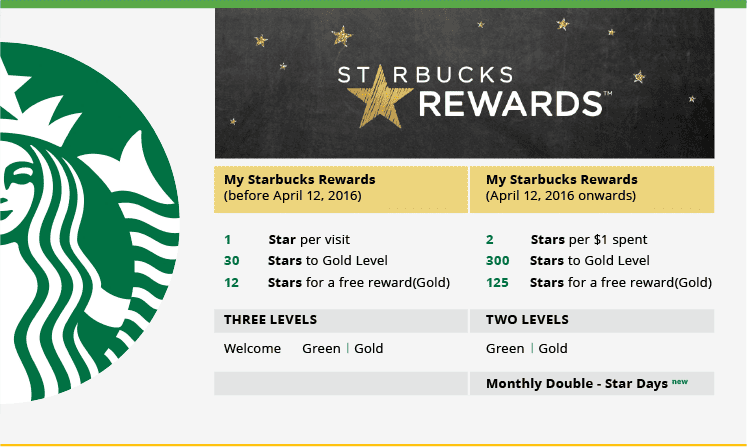
Another example is MSI, one of the world leaders in gaming, content creation, and productivity solutions known for its hardware (laptops, monitors and graphic cards), with a presence in over 120 countries. The MSI Rewards Program is a multi-tier point-based scheme where customers earn points for completing different actions, such as downloading the loyalty app or referring friends and purchasing MSI products. Based on the number of points collected, they move up the tiers (Bronze, Silver, Gold, Platinum), enjoying greater perks and benefits, offering them a sense of achievement and exclusivity.

By advancing through different levels or tiers, customers unlock additional perks and exclusive rewards. This system instils a sense of achievement and motivates users to reach higher milestones.
Example: Sephora’s Beauty Insider Program features three tiers: Insider, VIB, and Rouge. Customers ascend the tiers based on annual spending, unlocking benefits like exclusive product launches, free shipping, and personalised gifts.
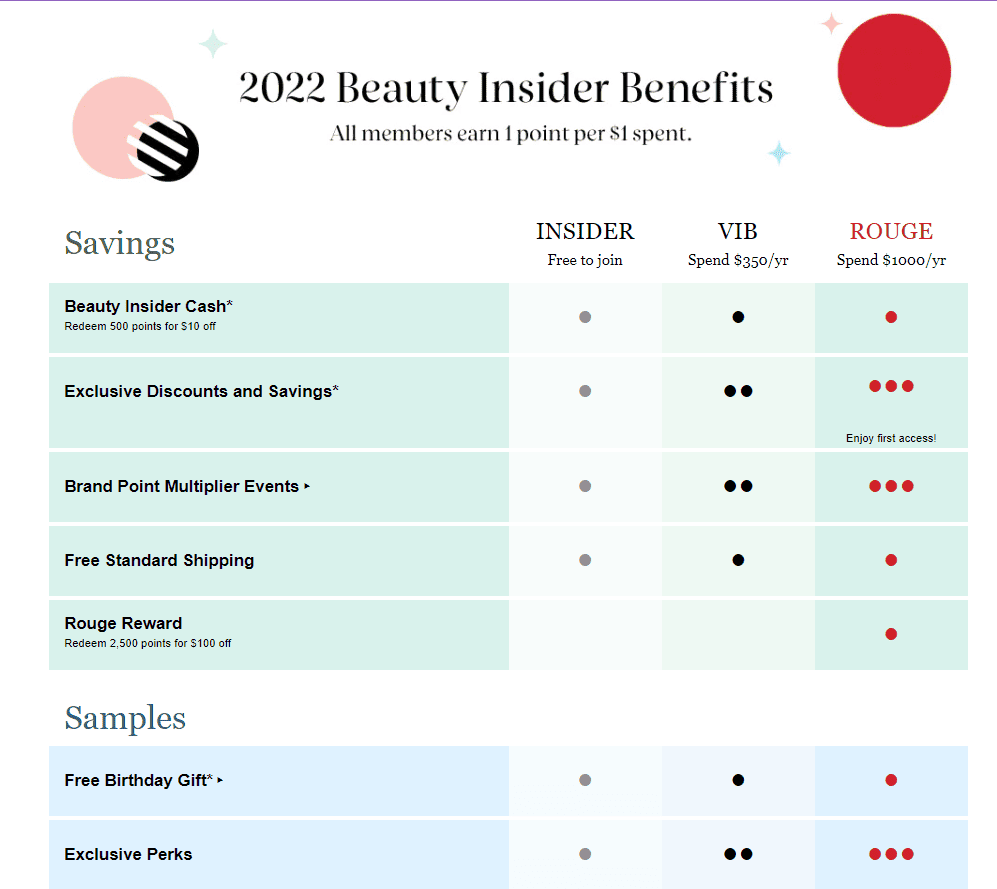
Similarly, the luxury fashion platform that is available in over 190 countries, Farfetch’s Access Rewards Program, offers 5 tiers (bronze, silver, gold, platinum and private client) based on the spending level of customers. As customers move up the tiers, they enjoy increasing benefits such as free shipping, priority customer support, and personal styling services.

Interactive tasks, missions, or challenges encourage customers to engage in brand-related activities, such as writing reviews, purchasing specific products, visiting the store multiple times in a month or referring friends. Completion of these tasks earns badges that deliver extra benefits, enhancing the sense of accomplishment and strengthening the customer’s connection with the brand.
Example: The Nike Run Club gamifies fitness by rewarding users with digital badges for completing running milestones, motivating them to stay active and engaged with the brand.
Likewise, Bergzeit, a German multichannel retailer specialising in mountaineering products, incentivises customers for their daily activities. Through its loyalty program, Bergzeit Club, members accumulate points by participating in sporting challenges. Beyond promoting an active lifestyle, Bergzeit also rewards customers for repeat purchases, submitting product reviews, and referring friends.
Elements of chance introduce excitement and instant gratification into loyalty programs. Customers can spin a virtual wheel or scratch a card to win random prizes, free products or discounts.
Example: UK’s no. 1 organic dairy brand, Yeo Valley Organic’s Yeokens Program lets members scan a special code on the packaging and redeem it online for Yeokens (program tokens) and use them to enter spin-to-win games, unlocking prizes, exclusive competitions, and donations to charities.

A digital version of traditional punch cards tracks customer activity and rewards them after a set number of transactions or engagements, encouraging repeat purchases. It can often be customised with tiered rewards or personalised offers.
Example: Dunkin’ Rewards gives members points for every purchase, allowing them to redeem free coffee or food items after accumulating a certain number of visits.
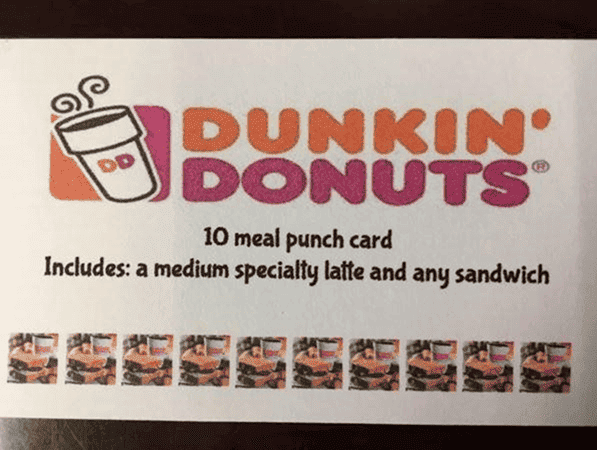
Similarly, Café Nero,, a UK-based coffee shop chain, has integrated punchcards into its loyalty program, promising users a free cup of coffee after they've collected nine stamps. Additionally, environmentally-conscious customers who use reusable cups get an extra digital stamp per this scheme. Punchcards are integral to the Café’s loyalty program, so much so that when it upgraded to a new loyalty program app, the punchcard scheme was migrated onto it.

By setting clear goals, brands motivate customers to reach specific benchmarks, such as a particular number of purchases, the amount spent, the duration of the membership, referrals, or engagement activities. On reaching these milestones, customers may be rewarded with free products or bonuses, etc.
Example: Costa Coffee,, one of the largest coffeehouses in the world, revamped its point-based loyalty program system in 2021 to expand its customer base by incorporating milestones. Its members get a complimentary beverage after eight purchases. Meanwhile, environmentally conscious members using reusable cups get it after four purchases.
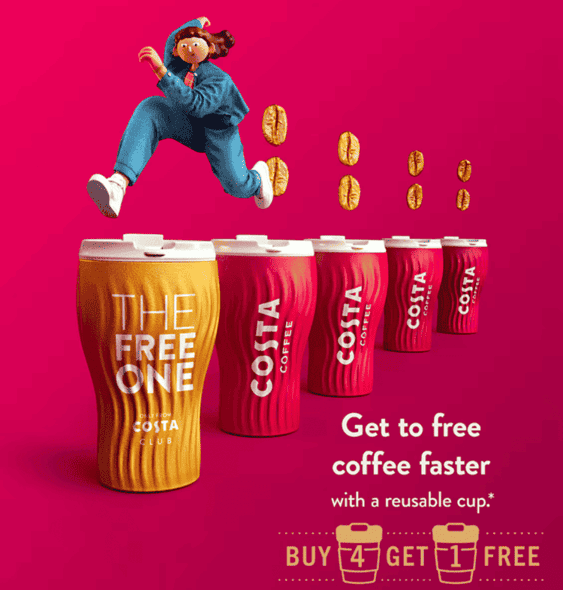
Another example is the US-based Delta Airlines’ Delta SkyMiles loyalty program. Its members can accumulate miles through flying with Delta or its partner airlines, staying at affiliated hotels, renting cars from partner rental companies, and utilising the Delta SkyMiles credit card. Delta's loyalty program incorporates a tiered milestone structure with milestone requirements that vary across membership levels, including Silver, Gold, Platinum, and Medallion tiers. These earned miles can be redeemed for flight upgrades, exclusive deals on accommodations and rentals with Delta's partners, and other experience-based rewards.
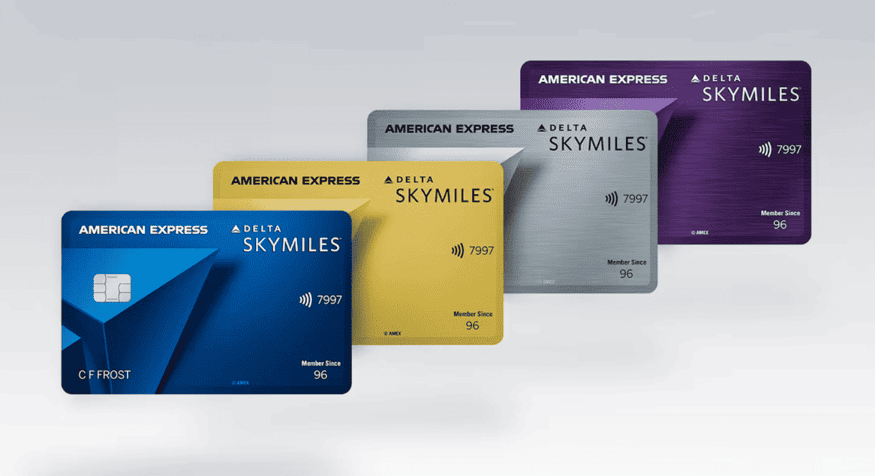
Tapping into competitive instincts, leaderboards rank customers based on their engagement, purchases, or achievements, creating a sense of prestige and motivation. Showcasing customer rankings can be particularly effective in community-driven brands where social recognition acts as a strong motivator.
Example: The Chinese website for business-to-consumer online retail, Tmall’s App, had launched an avatar game featuring an interactive leaderboard where users could earn higher rankings by completing challenges, sharing reviews, and participating in brand events, enhancing their social status within the community.
Another example is Peloton Bike, the US-based live-streaming and on-demand connected fitness app that offers classes, progress tracking and motivating instructors. Its leaderboards show everyone on the current ride as well as their previous best times for the same length ride. This helps riders catch up with other gamers while also competing with their past selves. By competing in real time, riders can move up or down the ranks throughout the bike ride.
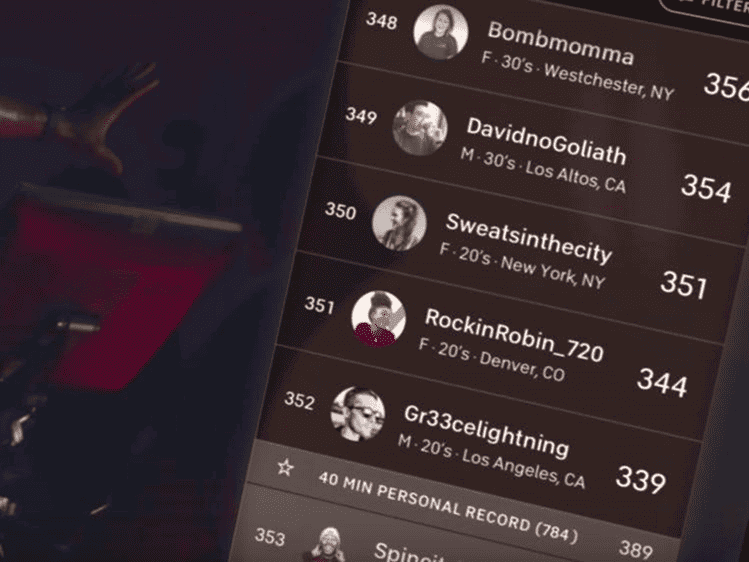
Gamified surveys and quizzes engage users by testing their knowledge about the brand or its products, rewarding them with points, badges or personalised recommendations for answering correctly. This is an entertaining way to increase customer involvement with the brand and also increase their brand awareness.
Example: Victoria’s Secret PINK Nation app offers trivia games and personality quizzes, rewarding users with points and exclusive offers (such as winning a trip to the company’s fashion show) while gathering customer insights and increasing website visits.
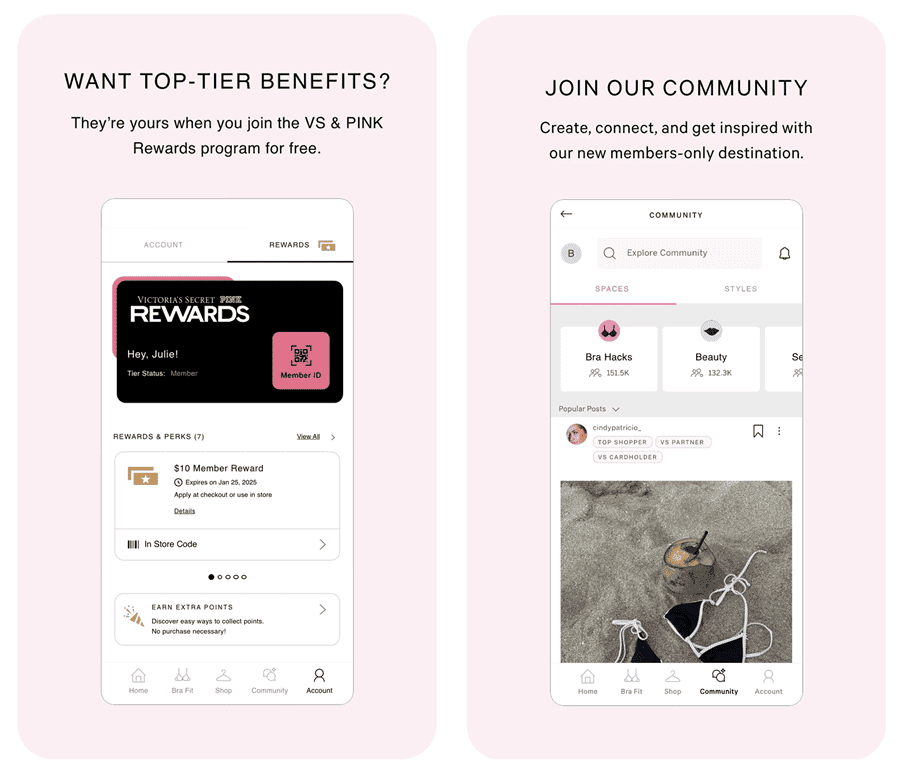
Encouraging customers to share their brand experiences, participate in hashtag challenges, or create user-generated content (UGC) increases brand visibility and engagement. It is highly cost-effective since, besides creating significant social buzz, it provides social media attention in exchange for a few high-ticket rewards such as loyalty points, sought-after products or VIP invites and others.
Example: As a leading online destination for body-positive fashion in sizes 12-32, Simply Be Perks rewards customers for sharing photos of themselves in their favourite brand outfits, fostering a strong sense of community. Members can also participate for a chance to join the VIP list at exclusive events.
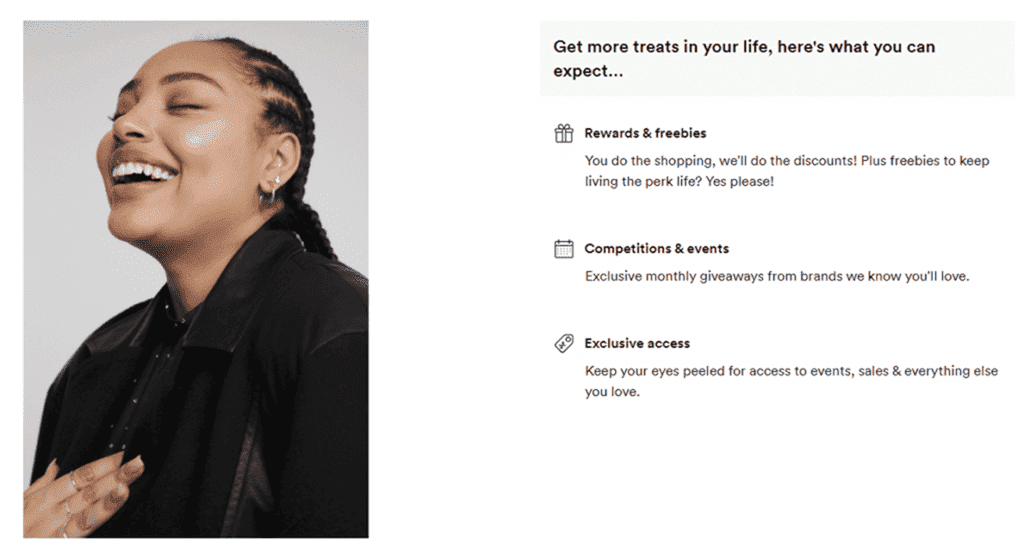
A modern take on scavenger hunts, brands hide clues or digital tokens for customers to find, enhancing engagement and product discovery. Such a treasure hunt allows customers to explore and uncover more of the brand’s offerings. In other words, treasure hunts effectively highlight new releases or revive interest in older stock without extra marketing efforts.
Example: Virgin Red Loyalty App launched a treasure hunt across multiple Virgin brands, allowing customers to find hidden tokens redeemable for points and prizes, adding an element of adventure.
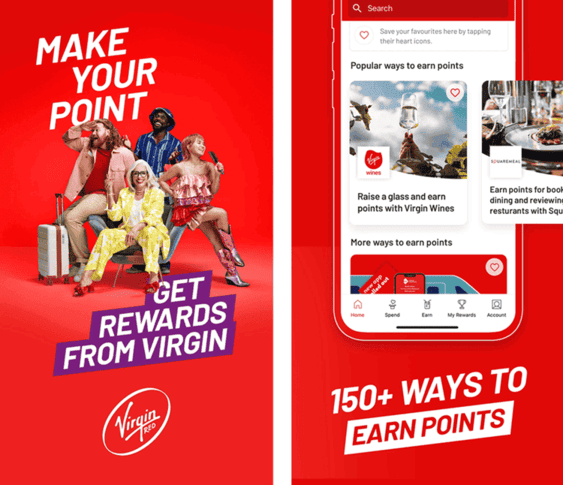
Brands encourage customers to interact with educational or promotional content by rewarding them for watching videos, reading blog posts, or scanning QR codes. The more content customers engage with, the better they understand the brand, deepening their emotional connection.
Example: Starbucks Rewards places QR codes in-store and in magazines, directing customers to educational content about their coffee and food products while incentivising engagement with loyalty points.
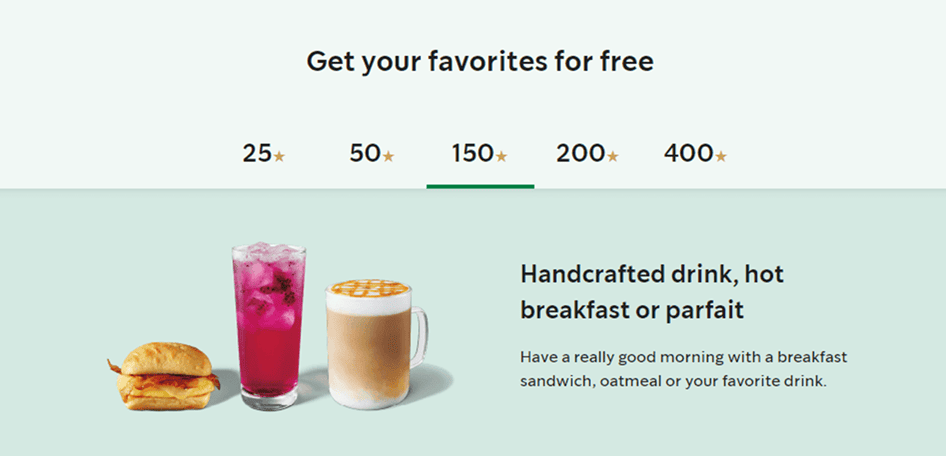
By integrating these gamification elements, brands not only make loyalty programs more dynamic and rewarding but also foster a deeper emotional connection with their customers. The right mix of game mechanics can transform brand interactions into memorable experiences, keeping customers engaged and invested in the long run.
Incorporating gamification into loyalty programs offers a powerful way to transform customer interactions and create lasting brand relationships. Here's why gamification should be part of your loyalty strategy:
Gamified loyalty programs make interactions more enjoyable, encouraging customers to engage more regularly and deeply with your brand.
Gamification adds fun and reward to the experience, motivating customers to return and continue their relationship with your brand.
By offering rewards and recognition for engagement, gamified programs foster a deeper emotional bond, strengthening brand loyalty.
Gamification encourages customers to share more information, helping brands collect valuable data to personalise offers, marketing strategies, and product offerings.
Leaderboards, badges, points, and levels act as motivators, inspiring customers to take desired actions and strive for higher status or rewards.
A well-designed gamified loyalty program can help your brand stand out, offering a unique value proposition that attracts and retains customers.
Gamification directly influences consumer behaviour by linking rewards to purchases or specific actions, driving more frequent buying and higher spending.
Encouraging customers to share achievements on social media generates social proof, attracts new customers, and fosters a community of brand advocates.
Although there’s an initial investment, gamified programs can provide a higher Return on Investment (ROI) compared to traditional marketing strategies by boosting customer lifetime value and engagement.
Gamified loyalty programs transform routine interactions into immersive, enjoyable experiences, increasing satisfaction and brand loyalty.
Gamified programs often include social features like leaderboards or the ability to share achievements, which boosts communication and advocacy.
Gamification elements can be adjusted based on the program’s success and shifting customer preferences, maintaining customer engagement over the long term.
In short, gamification in loyalty programs offers enhanced engagement, stronger brand loyalty, and increased sales while providing valuable insights and cost-effective marketing opportunities. It's a strategy that not only attracts new customers but also helps retain them, ensuring sustained business growth.
Incorporating gamification into your loyalty programs can drive customer engagement, boost retention, and enhance brand loyalty. Here's how to effectively add gamification elements to your strategy:
Strategic planning is essential for gamification to align with your business goals and customer expectations. Identify the right game mechanics that will captivate and motivate your customers to engage in desired behaviours. Thoughtful planning ensures that game-like elements are seamlessly integrated, creating an enjoyable experience rather than a feeling of being forced. This approach helps avoid confusion and ensures the gamified program remains effective, with regular adjustments to keep it fresh and engaging.
Leverage loyalty management solutions and platforms to integrate game-like features into your program. This integration makes the rewards process fun, interactive, and user-friendly while also tracking customer behaviour and preferences. It enables businesses to analyse customer data and adjust marketing strategies accordingly, ensuring a more personalised experience.
Tracking customer behaviour and analysing engagement is crucial for optimising your gamified loyalty program. Use analytics to measure participation rates, identify successful features, and detect areas that need improvement. Monitoring helps ensure the program is achieving its goals, such as driving sales, increasing customer retention, and reducing churn. By making data-driven adjustments, you can keep the program effective and engaging, offering tangible business outcomes.
Establish what you want to achieve with your gamified loyalty program. Define clear objectives, such as increasing repeat purchases or building customer advocacy. Offer meaningful rewards in exchange for customer actions, which motivates ongoing participation.
Understanding your customers is key to designing gamified elements they will enjoy. Identify their interests and engagement preferences. For instance, if they prefer social competition, introduce leaderboards or offer exclusive badges. Tailoring the experience based on customer behaviour will enhance participation and loyalty.
Engage with your customers to gather feedback on their experience. Use this information to refine your gamified features and pivot if necessary. Regular updates based on user input ensure the program stays relevant and engaging.
If your customers frequently engage with your brand through smartphones, make the gamified loyalty program mobile-friendly, either through a dedicated app or a responsive website. This ensures easy access and boosts participation on the go.
Integrate social features to encourage customers to share their achievements, such as rewards, badges, or milestones, on social media. Social sharing creates a sense of community and helps attract new customers while also acting as social proof of your brand’s value.
Use gamification elements like quizzes or preference-based challenges to gather insights on customer tastes. This allows for better segmentation and personalised rewards, further enhancing the customer experience and satisfaction.
By combining clear goals, understanding customer preferences, and leveraging the right tools and technology, businesses can create a gamified loyalty program that not only drives engagement but also strengthens long-term customer loyalty.
While gamification in loyalty programs can be a powerful tool to boost engagement and brand loyalty, it comes with its own set of challenges. Here are some key obstacles businesses must navigate:
If the gamified system is too complicated, it can overwhelm or frustrate customers. A confusing user experience might lead to disengagement, diminishing the effectiveness of the program. Striking the right balance between engaging features and simplicity is crucial.
Not all customers are motivated by the same incentives. While some may enjoy competition and achieving high scores, others might prefer straightforward rewards. Customising the experience to cater to diverse preferences can be challenging, but it’s essential for maximising participation.
Keeping the gamified elements fresh and engaging over time can be difficult. If the reward system becomes repetitive or predictable, it could lose its appeal. Regular updates and new challenges are needed to maintain long-term interest.
Developing and maintaining a gamified loyalty program requires significant investment in technology, design, and rewards. The upfront costs and ongoing maintenance can be a barrier for some businesses, particularly smaller ones.
Gamification can sometimes encourage excessive spending or unhealthy behaviours, as customers may feel pressured to reach the next level or earn more rewards. Additionally, if not executed thoughtfully, gamification may appear manipulative or unfair, which could damage your brand’s reputation.
To successfully implement gamification in loyalty programs, businesses must carefully navigate these challenges while maintaining a balance between engaging, rewarding, and ethical practices.
Gamification in loyalty programs has revolutionised customer engagement, turning ordinary interactions into exciting, memorable experiences. By incorporating elements of play, rewards, and competition, businesses can build stronger emotional connections with customers, encouraging repeat visits and fostering long-term loyalty. This approach transforms traditional loyalty programs into interactive journeys that resonate deeply with consumers.
As gamification continues to grow, brands that embrace these innovative strategies will stand out in a competitive market. The fun, challenge, and rewards of gamified programs not only enhance customer satisfaction but also create lasting relationships. By making customer interactions enjoyable, businesses can drive loyalty, engagement, and long-term success.
Ready to boost customer engagement with gamified loyalty programs? Try Thriwe today and transform your brand's loyalty strategy!